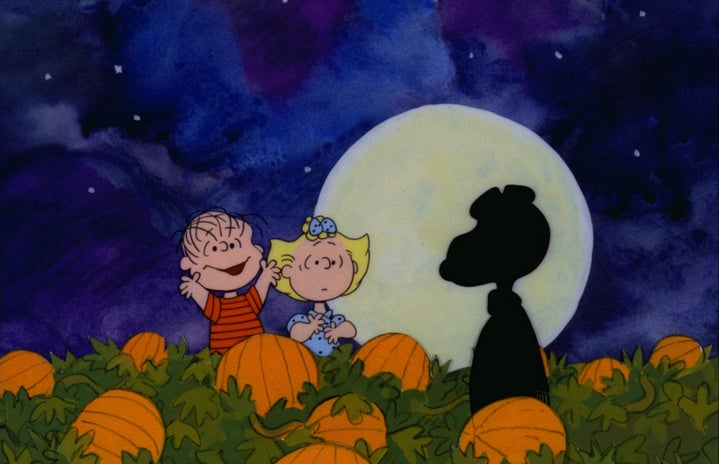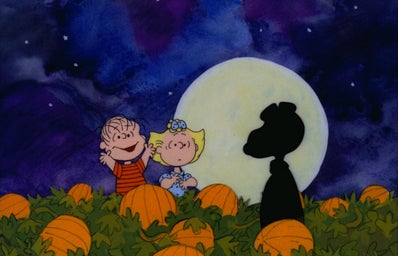As a horror superfan, October is easily my favorite time of year. It’s the month when I finally binge all the scary movies I’ve been meaning to watch. But the more horror films I take in, the more I pick up on the similar beats and patterns. In a slasher, for instance, you can almost always count on a final girl, a masked killer, and a rising body count. In supernatural horror, religious themes and a monstrous villain are practically guaranteed. But where do these conventions come from? How did we come to associate these specific elements with their subgenres?
Most modern horror films draw heavily from the genre’s foundational works, either paying tribute to or cleverly subverting familiar tropes. There are a select few iconic horror films that not only redefined the genre but also left a lasting influence, shaping virtually every horror movie that came after it.
- Psycho (1960), dir. Alfred Hitchcock
-
It’s impossible to discuss the cultural impacts of horror films without first mentioning Alfred Hitchcock’s Psycho. The film’s chilling narrative follows Marion Crane, a desperate embezzler on the run, whose ill-fated encounter with the timid yet unnervingly strange Norman Bates sets off a chain of haunting events. As her sister, lover, and a determined private investigator piece together the mystery, they uncover far more than they ever bargained for.
Before Psycho, horror films leaned heavily on monsters and creatures (think Dracula, Godzilla, Frankenstein, and the like). Hitchcock introduced a different kind of terror in Psycho, where the true source of horror was human nature itself, rather than an otherworldly monster. Psycho also shattered audience expectations by killing off Marion — played by the film’s biggest star, Janet Leigh — early on in the now-iconic shower scene.
- Night of the Living Dead (1968), dir. George A. Romero
-
If you love The Walking Dead or 28 Days Later, you owe Night of the Living Dead a massive thank you for popularizing and refining the zombie genre. Night of the Living Dead follows a group of seven people trapped in a farmhouse in rural Pennsylvania who are under constant assault by reanimated corpses.
Though he never uses the word ‘zombie’ in the film, George A. Romero is almost entirely credited for the modern portrayal of zombies in pop culture. He portrayed zombies as slow-moving corpses that fed on the flesh and brains of the living, could only be killed by a blow to the head, and spread their infection through bites. Night of the Living Dead also popularized the ‘splatter’ subgenre of horror, which depicts intense graphic violence and gore and can be seen in modern horror today with films like Terrifier and Saw. Actor Duane Jones, who portrays the lead character in Night of the Living Dead, also became the first Black actor to star in a horror film. All in all, Night of the Living Dead revolutionized the horror genre with its depiction of zombies.
- Rosemary’s Baby (1969), dir. Roman Polanski
-
My inclusion of Rosemary’s Baby in this list may be a tad biased, considering its novel counterpart is my favorite book. But personal feelings aside, there’s no denying the film’s massive impact on the horror genre. It follows Rosemary Woodhouse and her actor husband, Guy, as they move into a gorgeous new apartment building in New York City. When Rosemary becomes pregnant, she grows increasingly suspicious of her unnervingly kind, elderly neighbors, fearing they have sinister plans for her unborn child.
Rosemary’s Baby marked a turning point in the horror genre, shifting away from creature features and slasher films to a deeper, psychological terror. While Satan’s presence looms over the story, the real villains aren’t supernatural; they’re Rosemary’s husband and neighbors, who manipulate and betray her. It’s Rosemary’s growing isolation and her unraveling trust in the world around her that makes the film truly terrifying. This haunting sense of betrayal continues to inspire modern horror directors like Jordan Peele (Get Out) and Ari Aster (Hereditary), who both count Rosemary’s Baby as a major influence.
- The Exorcist (1973), dir. William Friedkin
-
Occult horror saw a rise in American cinema in the 1970s after the Hollywood Production Code, which had strict regulations on how religion could be portrayed in film, was lifted. The Exorcist took advantage of this lifting quickly. The film follows actress Chris MacNeil as her daughter, Regan, begins exhibiting strange symptoms like violent outbursts. When no doctor can find an answer to her condition, Chris turns to a Catholic priest, who determines Regan has been possessed by the Devil.
It’s impossible to quantify The Exorcist’s influence on the horror genre. It became the first horror film to be nominated for Best Picture at the Academy Awards, legitimizing the genre in the eyes of audiences and critics alike who previously thought horror to be nothing more than ‘popcorn flicks.’ It also led to the creation of the ‘exorcism’ subgenre, which includes Saint Maude, The Amityville Horror, and The Conjuring. The Exorcist also became one of the first major films to spawn a sequel that wasn’t originally planned to have one, which then developed into a media franchise.
- The Texas Chain Saw Massacre (1974), dir. Tobe Hooper
-
If you’re a fan of Scream or X, then The Texas Chain Saw Massacre is an absolute must-watch. Massacre can easily be attributed to creating and defining the modern slasher genre. It follows a group of five teenagers road-tripping through the Texas countryside, who encounter — and fall victim to — a family of sadistic cannibals.
It’s impossible not to draw connections between contemporary slashers and The Texas Chain Saw Massacre. It originated so many elements that we still see in horror today. Leatherface, the iconic face-wearing killer, wasn’t the first masked murderer in horror history. Still, his inception led to its increased usage; Michael Myers, Freddy Krueger, and Ghostface, among others, all took inspiration from Leatherface’s design. Sally Haderty is also one of film history’s earliest examples of a horror ‘final girl.’ Though Halloween refined the slasher genre into what it’s become now (as I’ll discuss next), The Texas Chain Saw Massacre laid the foundations for Halloween and is one of the genre-defining films for horror.
- Halloween (1978), dir. John Carpenter
-
Halloween begins on Halloween night in 1963, as 6-year-old Michael Myers stabs his sister to death in the small town of Haddonfield, Illinois, and is committed to a psychiatric facility. 15 years later, Myers escapes and returns to Haddonfield, where he sets his sights on teenager Laurie Strode and her friends and begins a murder spree against them.
If The Texas Chain Saw Massacre birthed the slasher genre, then Halloween refined it and put it on the map. The plot of Halloween may seem predictable now, but that’s only because virtually every slasher film that followed took such heavy inspiration from it. The most iconic part of Halloween is its killer — the boiler suit, white-mask-wearing Michael Myers. It’s impossible not to feel a deep sense of dread every time Michael appears on screen, with his seeming invincibility amplifying the terror. Laurie Strode — played by Jamie Lee Curtis, daughter of Psycho’s Janet Leigh — has become one of the most iconic ‘final girls’ in horror history. The film itself is a brilliant masterpiece and a cornerstone of the genre.
- Alien (1979), dir. Ridley Scott
-
Ridley Scott’s Alien is a relatively recent watch, and I’m ashamed it took me so long to get to it. The film follows a space crew of seven returning to Earth who are awakened from their stasis by a transmission from a nearby planet. As they stop to explore it, a crew member is attacked by an extraterrestrial organism inside a nest of eggs that follows them into their ship and wreaks havoc.
By the time Alien was released, space had already had its moment in the spotlight. Star Wars and Star Trek were hugely popular, but most space-set media focused on exploring hypothetical futures. Scott combined the cinematic interest in space with the relatively new ‘slasher’ horror subgenre, resulting in one of the most iconic installments in both the horror and science fiction genres. Though Scott didn’t invent this genre combination, Alien still became, and remains, the pinnacle of what a science fiction horror film can be. Combine this with slow, creepy pacing, a kick-ass female protagonist during a time when most science fiction leaders were men, and an instantly identifiable ‘killer,’ and you have the workings of an iconic horror film.
- The Blair Witch Project (1999), dir. Eduardo & Myrick
-
What’s now a classic horror subgenre, the ‘found-footage’ film, didn’t hit its stride until The Blair Witch Project premiered in theaters in 1999. The film follows three film students as they venture into the woods to film a documentary about a local legend, the Blair Witch. Over the course of filming, they begin to lose themselves in the woods and start fearing the Witch may not be a myth after all.
By no means did The Blair Witch Project invent found-footage horror — earlier works like Cannibal Holocaust incorporated the technique as far back as 1980 — but Blair Witch popularized the genre and can truly be credited with its boom in recent decades. What makes Blair Witch so good is how real and terrifying everything feels, which is partially attributed to its three lead actors who improvised most of their lines so that the dialogue feels natural. Similarly, the horror of Blair Witch lies not in what you see but rather in what you don’t see. Later horror staples like Cloverfield and Paranormal Activity owe much of their inspiration to The Blair Witch Project.
As with most genres, the conventions and familiar elements of today’s horror films can be traced back to the iconic movies that laid the groundwork for the genre. Nearly every scary movie made today has its roots in one or more of these foundational films, their influence on horror both pervasive and lasting. Once you’ve seen these classics, it’s impossible to watch a contemporary film without recognizing the inspirations they drew from. And with October upon us, there’s no better time than now to stream these films and see firsthand how they‘ve shaped the scares we love today.


